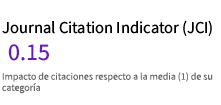The Natural Architecture of Inhabiting
DOI:
https://doi.org/10.24310/BoLArte.2019.v0i40.5715Abstract
Architecture as a refuge, as the construction of a habitat capable of responding to the needs of those who inhabit it, allows us to consider the possibility of learning from the intuitive way in which certain animals build their refuges as their own architectures. Beings that take shelter in nature following diverse guidelines, constructing habitable spaces that, in some cases, use their surroundings as their best ally. In other cases the animals rely on what is already there and, sometimes, dig the earth to find shelter, while others are able to take remains from the environment or produce artificial materials to build their shelter. We can observe that the strategies used by the animal world for the configuration of their shelters are similar to those of man when it comes to building and imagining new habitable spaces.
Downloads
Metrics
References
ALARCON, Luisa (2015) El proyecto arquitectónico como investigación: Una intervención en el territorio. El arroyo judío. Tesis doctoral inédita, Universidad de Sevilla.
BETTINI, S. (1963-2003) El espacio arquitectónico. De Roma a Bizancio, Nobuko S.A, Florida
DE SOLÁ, Ignasi (2000) “Removiendo la superficie”, en CONDE, Yago: Arquitectura de la Indeterminación, Actar, Barcelona
PÉREZ, Mariano (1999) “Epitafio a la arquitectura tradicional. Encuentro con el aporisma.” Demófilo. Revista cultural tradicional de Andalucía. Nº31. Fundación Machado, tercer trimestre 1999. (p.111-124)
MONAENKOVA, Daria, GRAVISH, Nick, RODRIGUEZ, Greggory, KUTNER, Rachel, A. D. Goodisman, Michael y I. GOLDMAN, Daniel “Behavioral and mechanical determinants of collective subsurface nest excavation” En: <http://jeb.biologists.org/content/218/9/1295> (14-12-2018)
Downloads
Published
How to Cite
Issue
Section
License
Todos los contenidos publicados en la revista Boletín de Arte están sujetos a la licencia Creative Commons Reconocimento-NoComercia-Compartirigual 4.0 cuyo texto completo puede consultar en <http://creativecommons.org/licenses/by-nc-sa/4.0>

Los/as autores/as cuyas contribuciones sean aceptadas para su publicación en esta revista conservarán el derecho no exclusivo de utilizar sus contribuciones con fines académicos, de investigación y educativos, incluyendo el auto-archivo o depósito en repositorios de acceso abierto de cualquier tipo.
La edición electrónica de esta revista esta editada por la Editorial de la Universidad de Málaga (UmaEditorial), siendo necesario citar la procedencia en cualquier reproducción parcial o total.











4.png)
